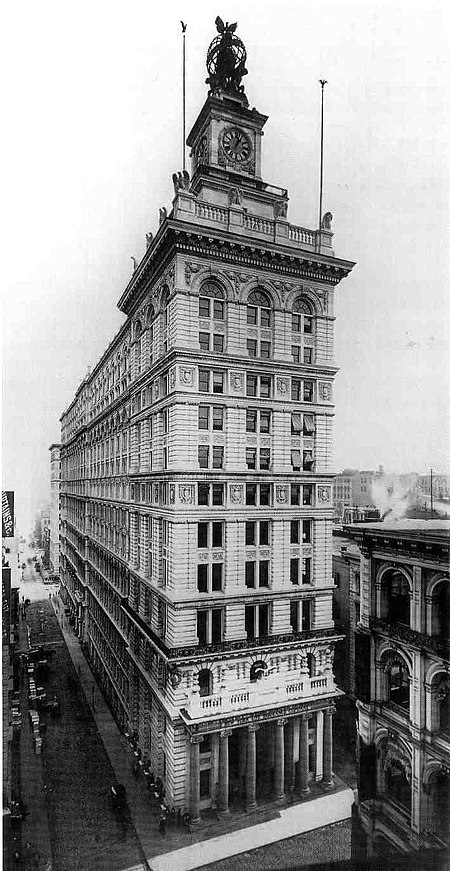Former New York Life Insurance Company Building
1899 establishments in New York CityBroadway (Manhattan)Buildings and structures on the National Register of Historic Places in ManhattanCommercial buildings completed in 1899Italian Renaissance Revival architecture in the United States ... and 7 more
McKim, Mead & White buildingsNew York City Designated Landmarks in ManhattanNew York City interior landmarksNew York Life Insurance CompanyOffice buildings in ManhattanTribecaUse mdy dates from September 2020

The Former New York Life Insurance Company Building, also known as the Clock Tower Building, is a structure located at 346 Broadway (with a secondary address of 108 Leonard Street) between Catherine Lane and Leonard Street, in Tribeca, Manhattan, New York City. Constructed in two stages, from 1868 to 1870 and from 1894 to 1899, it is a New York City Landmark and is listed on the U.S. National Register of Historic Places.
Excerpt from the Wikipedia article Former New York Life Insurance Company Building (License: CC BY-SA 3.0, Authors, Images).Former New York Life Insurance Company Building
Worth Street, New York Manhattan
Geographical coordinates (GPS) Address Nearby Places Show on map
Geographical coordinates (GPS)
| Latitude | Longitude |
|---|---|
| N 40.716111111111 ° | E -74.003611111111 ° |
Address
Worth Street 111
10013 New York, Manhattan
New York, United States
Open on Google Maps





